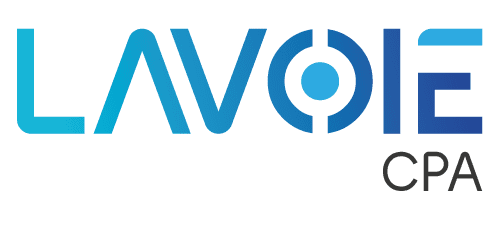
by Sharai Lavoie | Dec 5, 2025 | Federally Qualified Health Centers
Financial strain is one of the most persistent challenges facing Federally Qualified Health Centers (FQHCs). With tight margins, fluctuating payer mixes, and rising operational demands, leaders often navigate uncertainty with limited visibility. But financial pressure doesn’t have to feel unpredictable. When financial and operational data come together, FQHCs gain a clearer picture of what drives performance, and how to strengthen sustainability.
At Lavoie CPA, we help health centers connect encounters, payer mix, average revenue per encounter, and financial reporting into a single, integrated view. This alignment doesn’t just improve accuracy, it gives leadership the insight needed to make decisions confidently and proactively.
Below, we highlight three key advantages of this integrated approach, each one expanded in a full article linked for deeper reading.
Optimized Processes for Better Control
Advanced cloud systems like Sage Intacct give FQHCs greater financial control by reducing manual work, improving accuracy, and standardizing key workflows. When processes like reporting, approvals, and reconciliations run through a unified platform, your team gains both efficiency and consistency.
This transformation doesn’t require more staff, it requires smarter systems. Automation elevates accuracy, shortens close cycles, and helps reduce the administrative burden that contributes to financial strain.
Read more: Optimizing Financial Processes With Sage Intacct: How FQHCs Build Control & Efficiency
Greater Visibility Across Operations and Finance
Financial performance is shaped by operational activity, encounters, patient volume, payer mix, and service utilization all influence the bottom line. When those metrics stay disconnected from financial reports, leaders miss the chance to anticipate trends or intervene early.
Integrating clinical and operational data directly into dashboards and financial reporting gives executives real-time visibility into what is driving revenue and where potential risks may emerge. Understanding how visit patterns impact cash flow enables more accurate planning and faster response to change.
Read more: Connecting Encounters, Payer Mix, and Cash Flow: The Visibility FQHC Leaders Need
Stronger, More Accurate Planning
Budgets and forecasts are only as strong as the data that informs them. When financial planning reflects real operational activity, encounters, staffing levels, payer trends, and program performance, budgets become more realistic and forecasts more predictive.
With integrated systems, leaders can model scenarios, anticipate seasonal variations, and prepare for shifts in payer behavior. The result is a planning process that supports both financial stability and mission-driven growth.
Read more: Building Better Budgets and Forecasts Through Operational Integration
Financial Clarity That Strengthens Sustainability
FQHCs are under constant pressure to balance service demand with financial responsibility. By aligning financial data with operational realities, leaders gain the clarity needed to reduce strain, improve decision-making, and strengthen long-term sustainability.
At Lavoie CPA, we guide FQHCs through every step of this integration, from optimizing financial systems to connecting encounter-level data. If your organization is ready to move from reactive management to proactive insight, start the conversation today.

by Sharai Lavoie | Nov 21, 2025 | Federally Qualified Health Centers
When financial conversations only happen behind closed doors, collaboration suffers. In many Federally Qualified Health Centers (FQHCs), department leaders work tirelessly toward their own goals, patient access, program quality, or outreach success, but rarely see the full financial picture that connects them. The result isn’t inefficiency, it’s disconnection. And when visibility is limited, alignment becomes impossible.
Financial transparency isn’t just a reporting practice. It’s a leadership mindset that says everyone has a role in financial health.
The Leadership Shift: From Control to Collaboration
For years, finance teams were seen as gatekeepers of information, responsible for budgets, compliance, and approvals. But in a modern FQHC, finance becomes the translator between numbers and mission. When leaders share insights openly, departments start to see how their decisions ripple across the organization.
Transparency turns numbers into context. A clinic director who understands her department’s cost per encounter can make data-driven adjustments in scheduling or supply use. A program manager who sees monthly variance reports can plan ahead instead of reacting after the fact. Leadership’s willingness to share builds trust, and trust accelerates alignment.
Why Transparency Builds Accountability (the Healthy Kind)
Accountability isn’t about oversight; it’s about empowerment.
When department heads understand how financial performance ties to outcomes, they begin to view budgets as tools, not restrictions. Regular review meetings, shared dashboards, and open conversations transform financial data into a shared responsibility.
Transparency also breaks down the us vs. them dynamic that often separates operations from finance. Instead of questioning why cuts or adjustments happen, teams understand the reasoning and contribute to solutions. This creates a culture where accountability feels supportive, not punitive.
Making Information Actionable
Sharing numbers is only valuable if people know what to do with them. That’s where clarity of communication matters as much as accuracy. Dashboards and reports should be designed for accessibility, simple visuals, clear KPIs, and language that connects dollars to mission.
For example, showing how reducing supply waste in one department helped fund new screening equipment in another reinforces the link between action and impact. Transparency becomes the bridge between effort and reward.
The Cultural Dividend of Clarity
Financial transparency doesn’t just improve metrics; it strengthens morale.
When people understand how their work influences the organization’s success, they feel seen and trusted. Teams collaborate more easily, innovation rises, and financial conversations shift from defensive to creative.
This is the cultural dividend of clarity: alignment that outlasts any single budget cycle. It’s what turns a group of departments into a unified organization.
Lead with Clarity
At Lavoie CPA, we help FQHC leaders cultivate transparency through integrated systems, structured reporting, and open financial communication. Our approach empowers every level of your organization to see, understand, and act on financial insight.
Because when leadership leads with clarity, teams respond with purpose.
If your organization is ready to turn information into collaboration,
Start the conversation today.

by Sharai Lavoie | Nov 21, 2025 | Federally Qualified Health Centers
For Federally Qualified Health Centers (FQHCs), every dollar has purpose. It funds access, outreach, and quality of care. Yet, even the most efficient centers can lose visibility into how money is spent across programs, locations, and departments
The challenge isn’t cutting costs, it’s finding smarter ways to use existing resources without compromising the mission.
This short playbook outlines how FQHC leaders can identify meaningful savings while protecting patient care and staff well-being.
Step 1: Map Out the True Cost of Care
Start with clarity, not assumptions.
Gather spending data by department, service line, and program to reveal where costs accumulate. Look beyond general ledgers, include overtime, supply use, and vendor contracts. When expenses are grouped around actual care delivery, hidden patterns appear: duplicated purchases, unused subscriptions, or outdated workflows that drain funds quietly.
At Lavoie CPA, we often find that just visualizing cost drivers, such as cost per encounter or administrative expense ratios, sparks immediate, low-friction improvements.
Step 2: Eliminate Redundancy Before Reducing Budget
The fastest savings come from removing overlap, not resources.
Many FQHCs operate with multiple vendors for similar tasks, payroll, procurement, or reporting, because systems were added over time. Consolidating services or integrating platforms can reduce both fees and complexity.
For example, automating invoice approvals and linking them to purchase orders can cut hours of manual verification each month. This frees staff to focus on compliance and patient coordination instead of paperwork.
Step 3: Reinvest Savings Into High-Impact Areas
Cost-saving is only valuable when it strengthens your mission.
Reallocate every dollar saved toward areas that enhance patient experience, additional clinic hours, telehealth initiatives, or staff training. This approach builds internal trust: teams see that efficiency doesn’t equal restriction; it equals reinvestment.
Tracking and publicly sharing where the savings go also reinforces transparency and accountability, encouraging departments to participate actively in ongoing improvement.
Step 4: Build Continuous Review Into Your Culture
Sustainable efficiency isn’t a one-time audit; it’s a habit.
Schedule quarterly reviews where finance and operations teams assess progress, revisit metrics, and set new targets. Use dashboards that update in real time to make these discussions data-driven, not anecdotal.
When everyone can see the numbers, ownership spreads. Over time, small optimizations compound into lasting financial stability.
Step 5: Measure Success Beyond the Bottom Line
Financial health is vital, but in an FQHC, it’s inseparable from patient care.
Track not only how much money is saved, but how those changes affect outcomes, shorter wait times, improved staff retention, and expanded services. True efficiency shows up when both metrics move in the right direction: cost down, impact up.
Partnering for Smarter Efficiency
At Lavoie CPA, we help FQHCs uncover hidden inefficiencies, streamline processes, and design reporting systems that turn savings into strategic advantage.
Our approach keeps care quality at the center while strengthening financial sustainability.
If your health center is ready to make every dollar work harder, and every decision work smarter,
Start the conversation today.

by Sharai Lavoie | Nov 21, 2025 | Federally Qualified Health Centers
When the leadership team at a mid-sized Federally Qualified Health Center began preparing its quarterly report, the numbers looked solid, expenses were within budget, and revenue was stable. But when they dug deeper, a pattern emerged: some departments were overspending consistently while others were underspending by wide margins. The organization was financially balanced overall, yet internally misaligned.
This discovery wasn’t about cutting costs; it was about understanding them. The issue wasn’t how much money was spent, but where and why. That moment of clarity changed how the center managed its operations, and it’s a shift every FQHC can benefit from.
Why Departmental Visibility Matters
Without granular visibility, financial reporting becomes an average of averages. A single “budget vs. actuals” report hides the nuances that reveal where true efficiency, or waste, lives.
FQHCs that view performance only at the top level often miss early signs of financial stress: supply costs that climb faster than patient volume, overtime creeping up in certain clinics, or program expenses that don’t align with outcomes.
Department-level visibility solves this by showing leaders how resources flow in real time. It connects financial decisions to operational realities, helping FQHCs move from reactive adjustments to proactive strategy.
Step 1: See the Full Picture
Visibility starts with segmentation. Categorizing spending by department, service line, or grant-funded program allows leaders to compare how resources are used and where they bring the most value.
For example, tracking the ratio of costs to encounters per department can uncover inefficiencies that might otherwise stay hidden. It’s not about micromanagement, it’s about empowering every manager to make informed, data-driven decisions.
When departments understand their financial impact, they take ownership of improvement. This bottom-up accountability strengthens not only financial results but also team collaboration.
Step 2: Connect Finance to Operations
Numbers without context can mislead. A department that overspends might appear inefficient, but what if that overspending led to a measurable increase in patient visits or outcomes? The key is to interpret financial data through an operational lens.
Connecting financial systems with operational metrics, encounters, payer mix, and staff utilization, transforms numbers into narratives. Leadership can see, for instance, that increased expenses in one area supported growth in another, turning what looks like a red flag into proof of mission impact.
Visibility isn’t just seeing the numbers; it’s understanding their story.
Step 3: Turn Insight Into Action
Data has no value without follow-through. Once trends emerge, leadership should meet regularly to discuss departmental variances and identify action steps. These conversations shouldn’t be about blame; they’re about alignment.
If one location is running higher administrative costs, maybe workflows need reengineering. If another operates below budget, its methods might serve as a model. Insight leads to learning, and learning leads to consistency across programs.
The real goal is to create a feedback loop where financial awareness informs operational behavior and vice versa.
The Outcome: A More Predictable, Empowered Organization
When FQHCs understand departmental spending, financial management stops being a monthly task and becomes a continuous source of insight. Leaders can anticipate challenges, replicate what works, and support every department in achieving both fiscal discipline and mission fulfillment.
At Lavoie CPA, we help FQHCs gain this level of clarity by integrating financial systems, structuring departmental reporting, and aligning data with operational goals. The result is not just cleaner numbers, it’s a clearer path forward.
If your organization is ready to see its financial picture in full color, start the conversation today.

by Sharai Lavoie | Nov 21, 2025 | Federally Qualified Health Centers
For most Federally Qualified Health Centers (FQHCs), the challenge isn’t passion or purpose; it’s resources. Leaders are constantly balancing budgets, funding limitations, and staffing needs while trying to expand patient access. Yet one of the most overlooked opportunities for improvement lies inside the organization itself: how departments use their budgets.
Understanding where and how each department spends its resources can transform financial management from reactive to strategic. Instead of discovering issues at year-end, you gain the power to adjust mid-cycle, reallocate efficiently, and ensure every dollar supports your mission.
Below, we explore three key benefits of optimizing departmental costs and how each one drives stronger performance across your FQHC.
Understanding Departmental Spending
Visibility starts with clarity. Many FQHCs track overall financial performance but lack detailed insight into how individual departments use their budgets. This creates a blind spot that can hide inefficiencies or uneven resource allocation.
When leadership can see spending patterns by program, clinic, or service line, financial conversations become more focused and actionable. Departments that consistently overspend or underutilize their budgets reveal where adjustments are needed, before problems escalate.
In our upcoming article Understanding Departmental Spending, we’ll discuss how mapping out your department-level data can uncover insights that traditional reporting often misses and help you realign financial decisions with operational needs.
Identifying Cost-Saving Opportunities Without Sacrificing Care
The goal of financial optimization isn’t to cut, it’s to strengthen. By analyzing your cost structures, you can often find opportunities to save without reducing quality or patient access. For instance, identifying redundant purchases between departments or automating manual approval processes can lead to immediate, measurable savings.
These savings then translate directly into mission support, such as increased community outreach, new services, or staff training initiatives. In our next blog, Identifying Cost-Saving Opportunities Without Sacrificing Care, we’ll dive deeper into how strategic reviews can free up funds that fuel your organization’s growth.
Building Financial Transparency Across Departments
Transparency is what sustains efficiency. When department leaders understand how their spending affects the organization as a whole, they become active partners in financial stewardship. Shared dashboards, clear reporting structures, and regular cost reviews create alignment between operations and finance.
This open communication not only improves accuracy, but it also fosters accountability and collaboration. In our piece Building Financial Transparency Across Departments, we’ll explore how data-sharing and consistent communication create a culture of continuous improvement and shared ownership.
The Result: Financial Clarity That Drives Mission Impact
FQHCs that gain insight into their departmental spending don’t just save money; they build resilience. Real-time visibility supports smarter budgeting, proactive resource allocation, and stronger alignment between financial performance and patient care outcomes.
Efficiency and compassion can coexist. When your financial systems and your mission move in sync, your organization becomes stronger, steadier, and ready to grow.
At Lavoie CPA, we help FQHCs analyze departmental data, uncover cost-saving opportunities, and build transparent systems that sustain long-term success.
If your center is ready to strengthen visibility and align every dollar with purpose,
Start the conversation today.





